Abstract
The importance of 3-hydroxy-3-methylglutaryl coenzyme A reductase (HMG-CoA reductase) in the regulation of sesquiterpenoid phytoalexin accumulation in potato (Solanum tuberosum L. cv Kennebec) was examined. Wounding of potato tubers produced a large temporary increase in HMG-CoA reductase activity of the microsomal and organelle fractions. Treatment of wounded tuber tissue with the sesquiterpenoid phytoalexin elicitor arachidonic acid further increased and prolonged the HMG-CoA reductase activity in the microsomal but not the organelle fraction. Incubation of elicitor-treated tuber tissue in white light reduced organelle and microsomal HMG-CoA reductase activity to 50% and 10%, respectively, of the activity of tissues held in darkness. Constant light also reduced overall phytoalexin accumulation 58% by greatly reducing levels of lubimin. Rishitin accumulation was not significantly altered by light. Application of nanomolar amounts of mevinolin, a highly specific inhibitor of HMG-CoA reductase, to elicitor-treated tuber tissue produced a large decline in lubimin accumulation and did not markedly alter rishitin accumulation. These results indicate that HMG-CoA reductase has a role in the complex regulation of sesquiterpenoid phytoalexin accumulation in potato.
Full text
PDF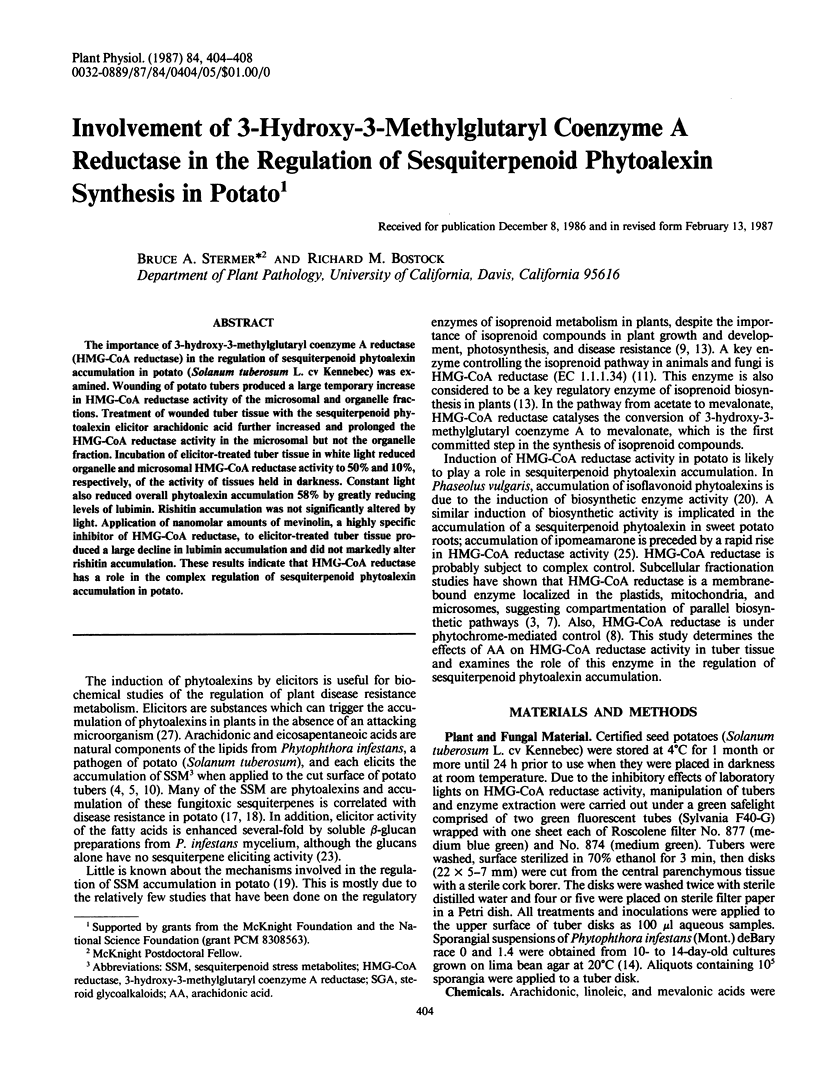
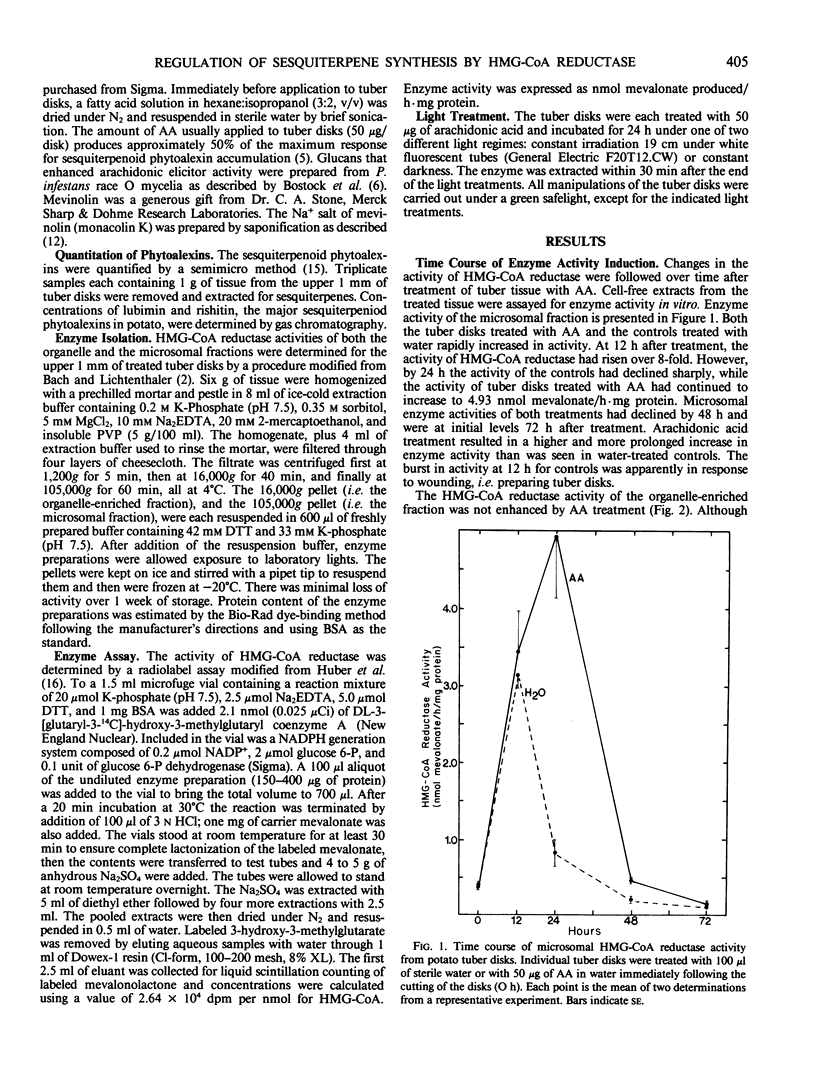
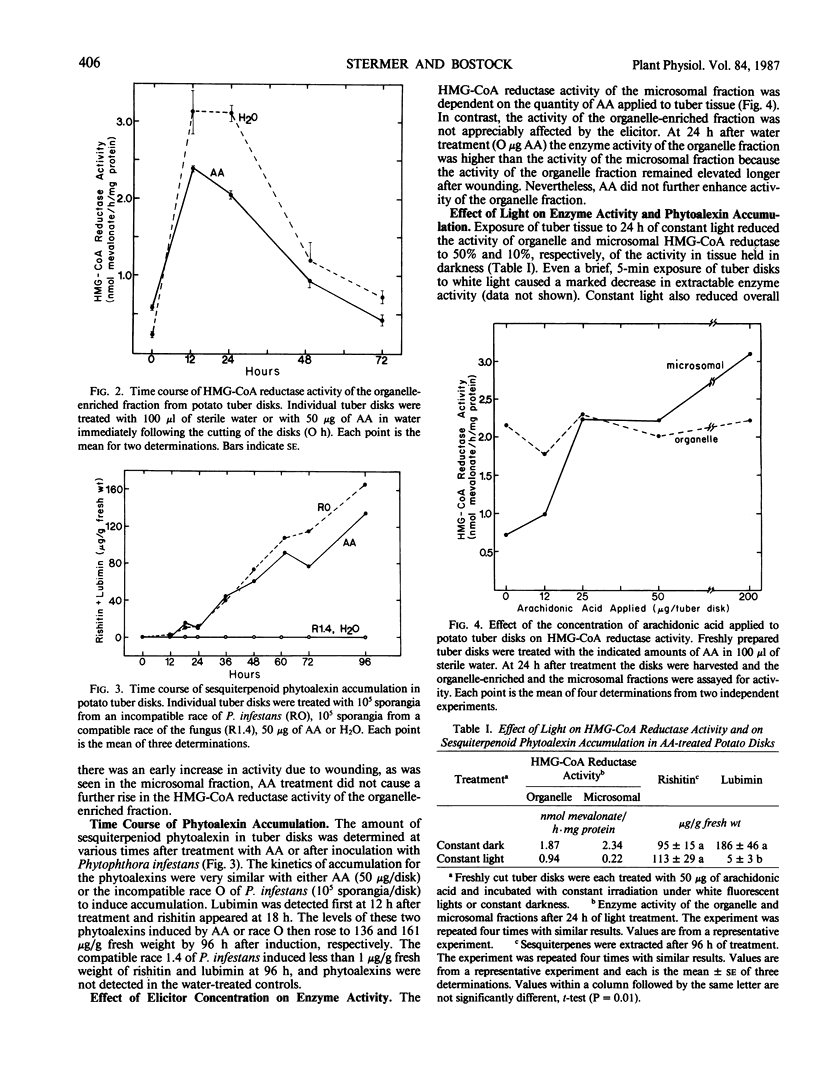
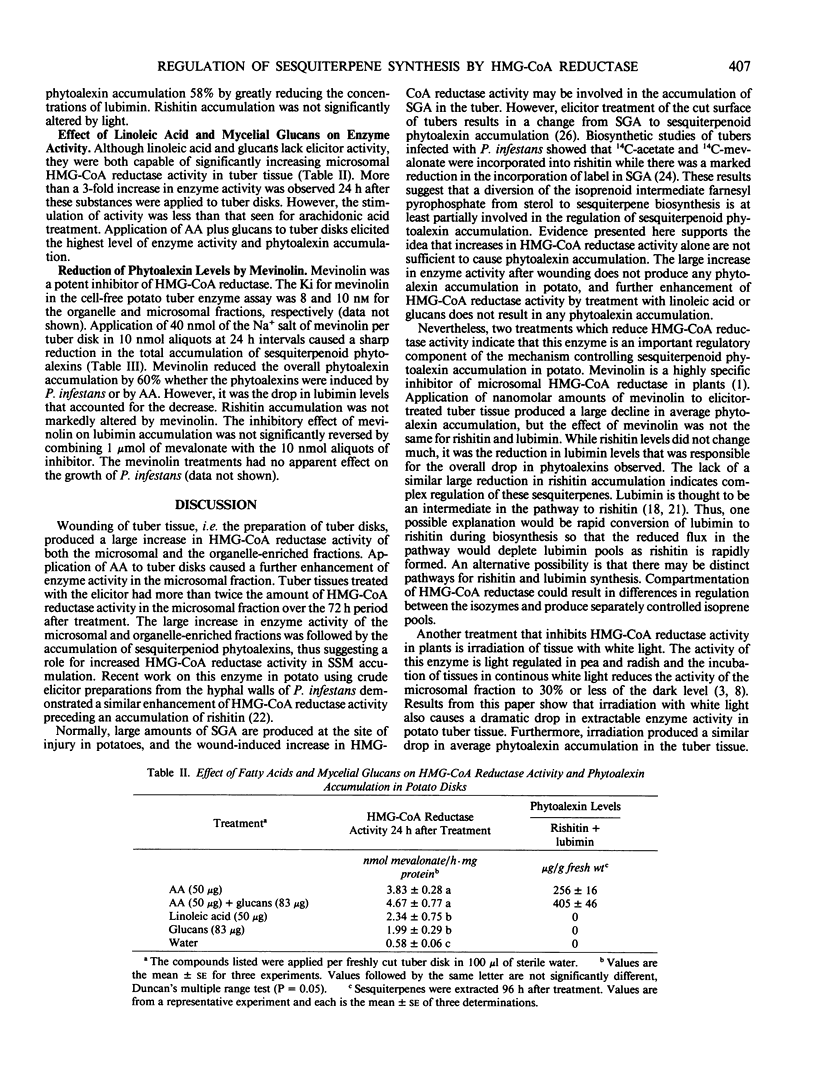
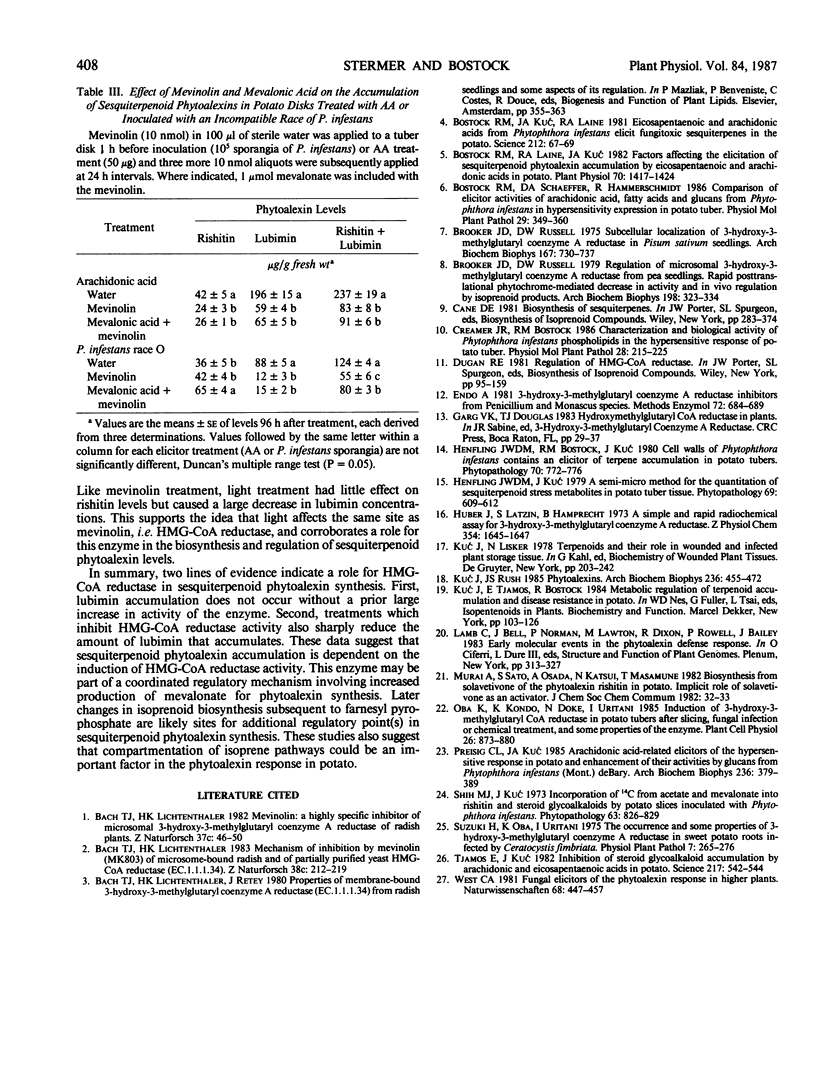
Selected References
These references are in PubMed. This may not be the complete list of references from this article.
- Bach T. J., Lichtenthaler H. K. Mechanisms of inhibition by mevinolin (MK 803) of microsome-bound radish and of partially purified yeast HMG-CoA reductase (EC.1.1.1.34). Z Naturforsch C. 1983 Mar-Apr;38(3-4):212–219. doi: 10.1515/znc-1983-3-410. [DOI] [PubMed] [Google Scholar]
- Bach T. J., Lichtenthaler H. K. Mevinolin: a highly specific inhibitor of microsomal 3-hydroxy-3-methylglutaryl-coenzyme A reductase of radish plants. Z Naturforsch C. 1982 Jan-Feb;37(1-2):46–50. doi: 10.1515/znc-1982-1-209. [DOI] [PubMed] [Google Scholar]
- Bostock R. M., Kuc J. A., Laine R. A. Eicosapentaenoic and Arachidonic Acids from Phytophthora infestans Elicit Fungitoxic Sesquiterpenes in the Potato. Science. 1981 Apr 3;212(4490):67–69. doi: 10.1126/science.212.4490.67. [DOI] [PubMed] [Google Scholar]
- Bostock R. M., Laine R. A., Kuć J. A. Factors affecting the elicitation of sesquiterpenoid phytoalexin accumulation by eicosapentaenoic and arachidonic acids in potato. Plant Physiol. 1982 Nov;70(5):1417–1424. doi: 10.1104/pp.70.5.1417. [DOI] [PMC free article] [PubMed] [Google Scholar]
- Brooker J. D., Russell D. W. Regulation of microsomal 3-hydroxy-3-methylglutaryl coenzyme A reductase from pea seedlings: rapid posttranslational phytochrome-mediated decrease in activity and in vivo regulation by isoprenoid products. Arch Biochem Biophys. 1979 Nov;198(1):323–334. doi: 10.1016/0003-9861(79)90425-9. [DOI] [PubMed] [Google Scholar]
- Brooker J. D., Russell D. W. Subcellular localization of 3-hydroxy-3-methylglutaryl coenzyme A reductase in Pisum sativum seedlings. Arch Biochem Biophys. 1975 Apr;167(2):730–737. doi: 10.1016/0003-9861(75)90518-4. [DOI] [PubMed] [Google Scholar]
- Endo A. 3-Hydroxy-3-methylglutaryl-CoA reductase inhibitors. Methods Enzymol. 1981;72:684–689. doi: 10.1016/s0076-6879(81)72058-5. [DOI] [PubMed] [Google Scholar]
- Huber J., Latzin S., Hamprecht B. A simple and rapid radiochemical assay for 3-hydroxy-3-methylglutaryl-coenzyme A reductase. Hoppe Seylers Z Physiol Chem. 1973 Dec;354(12):1645–1647. [PubMed] [Google Scholar]
- Kuć J., Rush J. S. Phytoalexins. Arch Biochem Biophys. 1985 Feb 1;236(2):455–472. doi: 10.1016/0003-9861(85)90648-4. [DOI] [PubMed] [Google Scholar]
- Preisig C. L., Kuć J. A. Arachidonic acid-related elicitors of the hypersensitive response in potato and enhancement of their activities by glucans from Phytophthora infestans (Mont.) deBary. Arch Biochem Biophys. 1985 Jan;236(1):379–389. doi: 10.1016/0003-9861(85)90638-1. [DOI] [PubMed] [Google Scholar]
- Tjamos E. C., Kucacute J. A. Inhibition of steroid glycoalkaloid accumulation by arachidonic and eicosapentaenoic acids in potato. Science. 1982 Aug 6;217(4559):542–544. doi: 10.1126/science.217.4559.542. [DOI] [PubMed] [Google Scholar]


